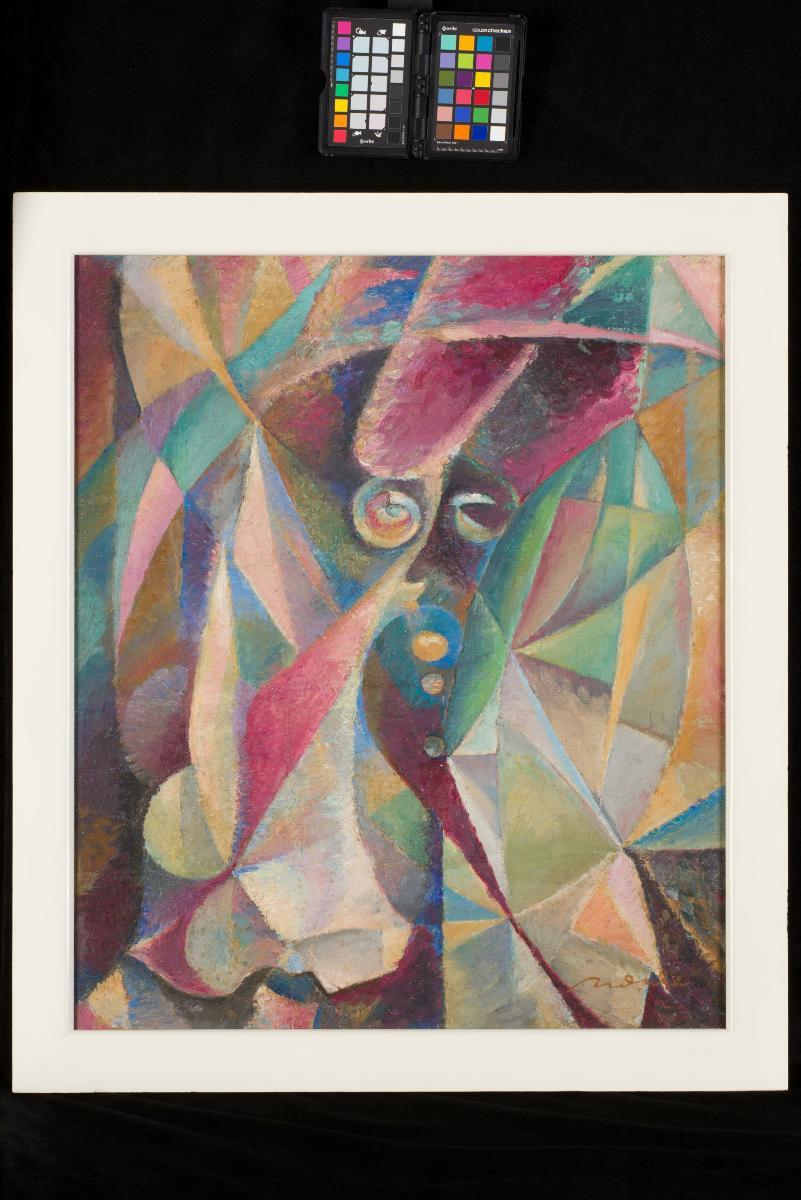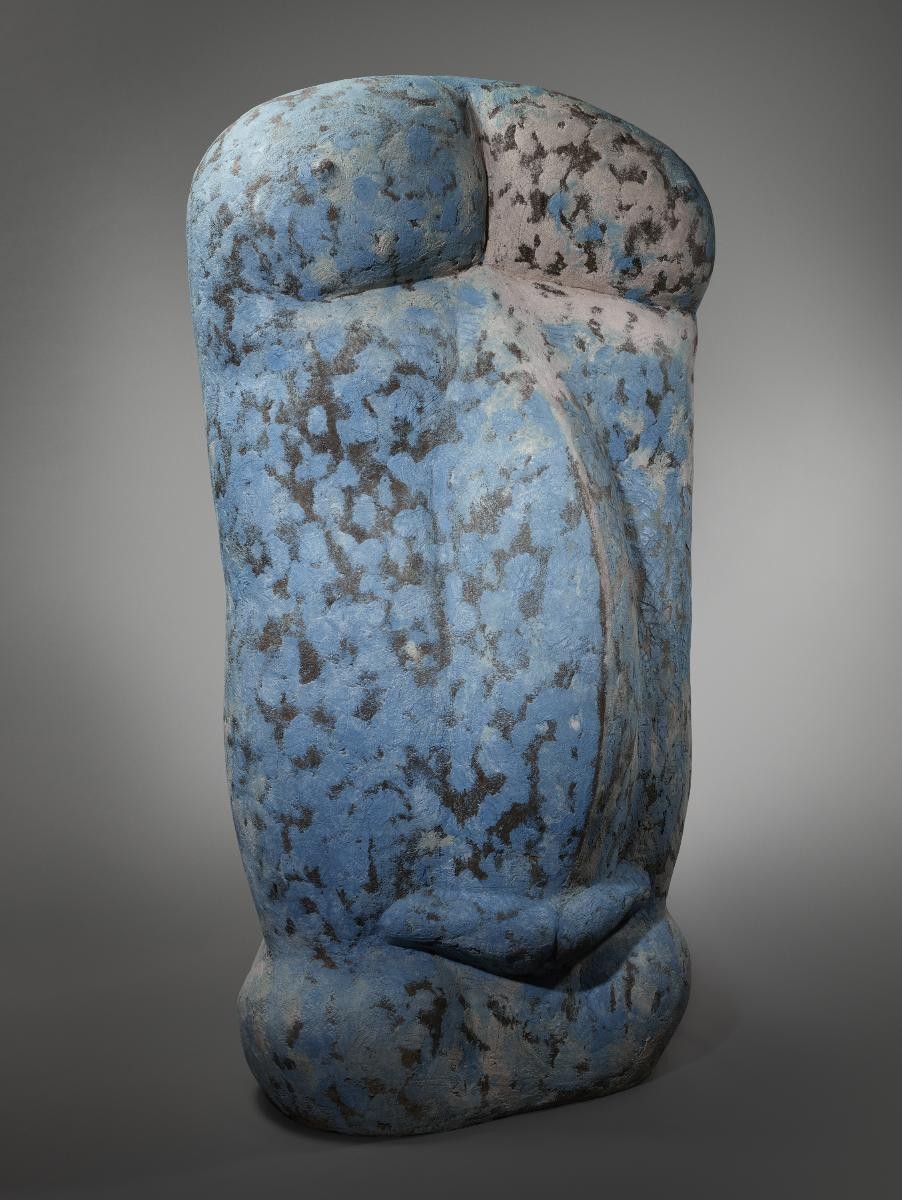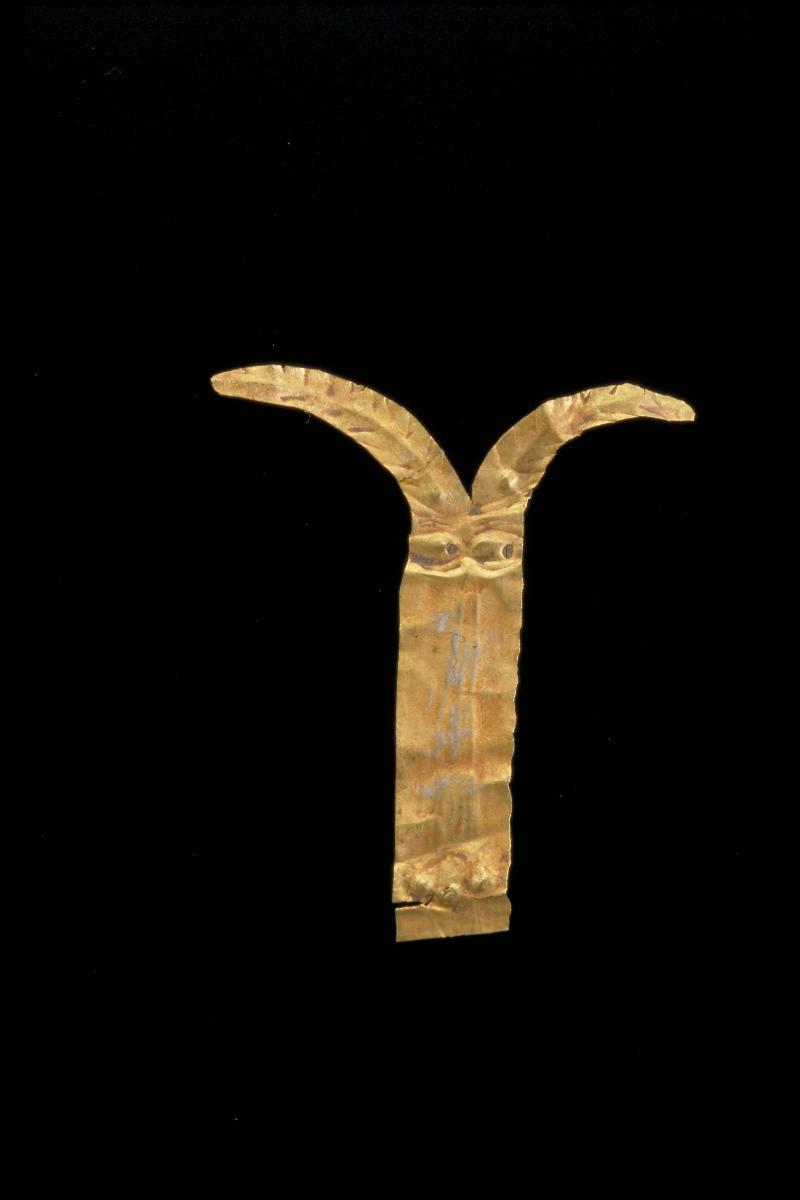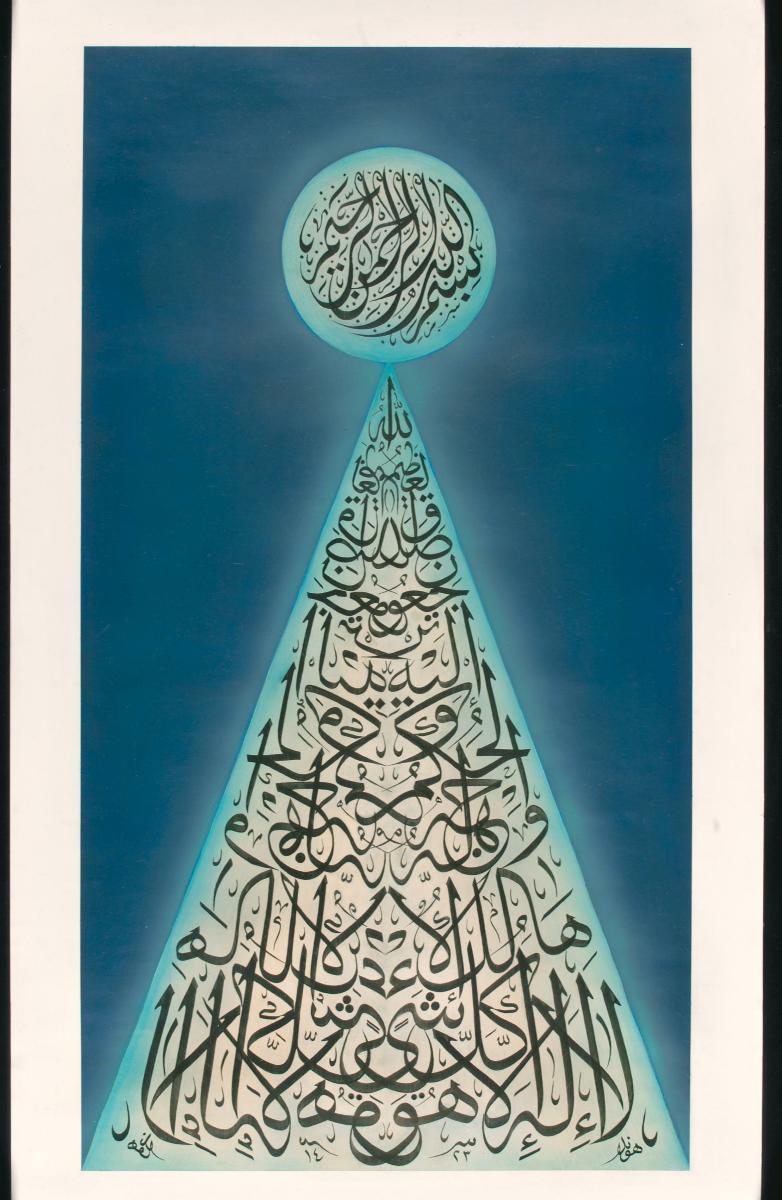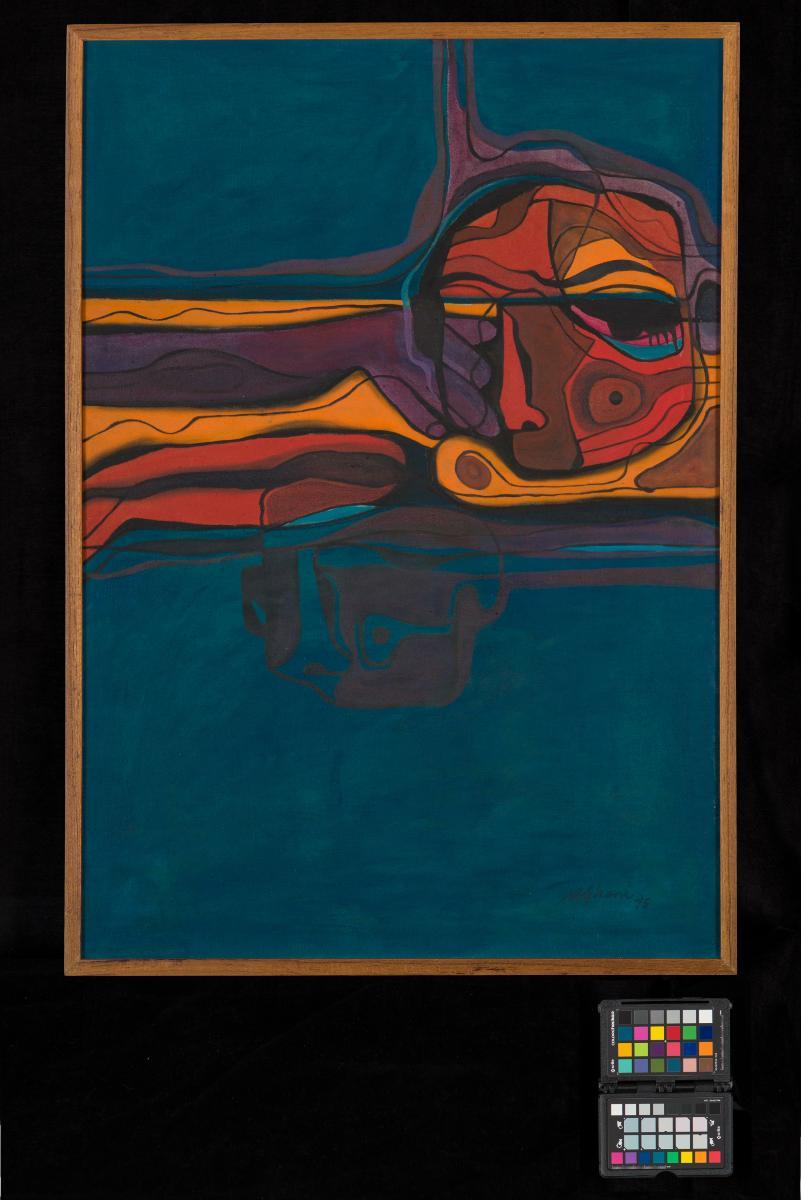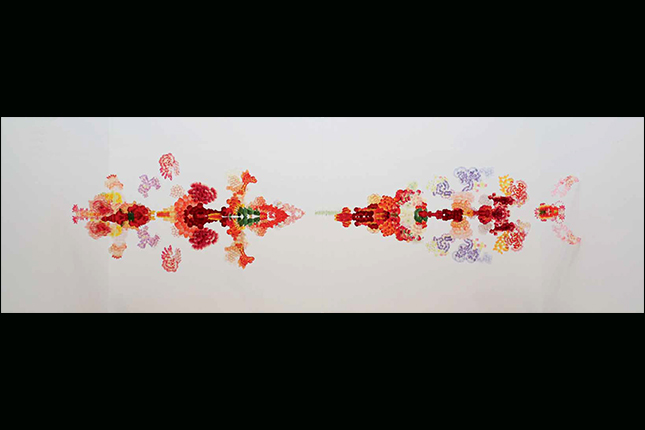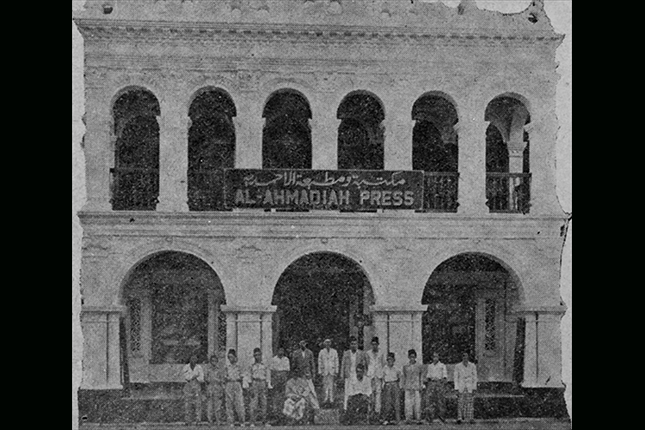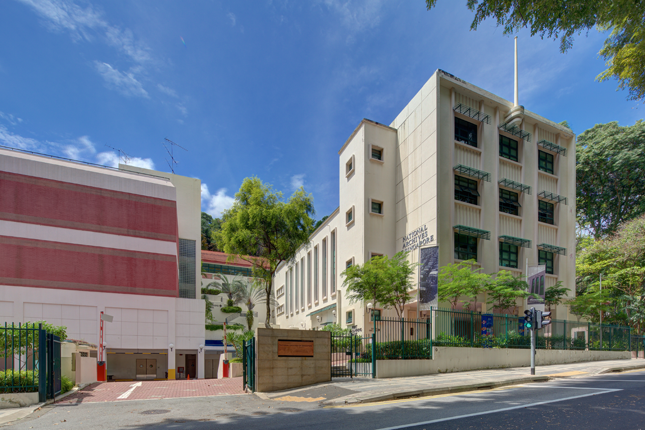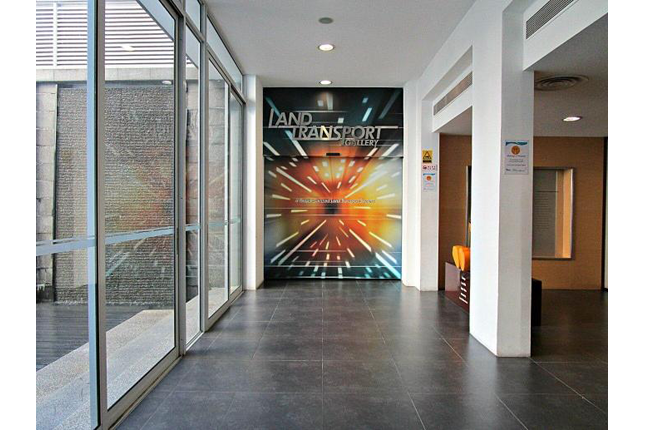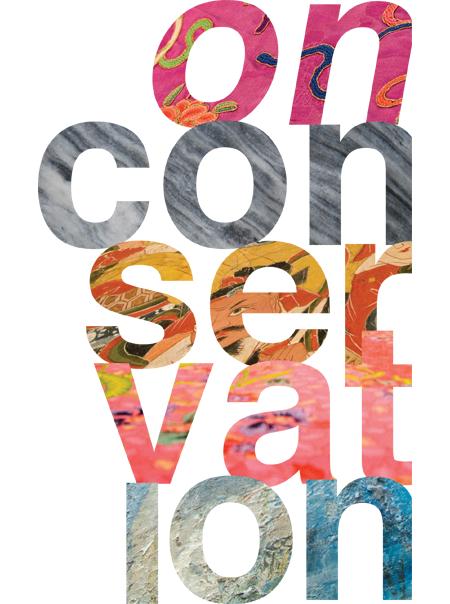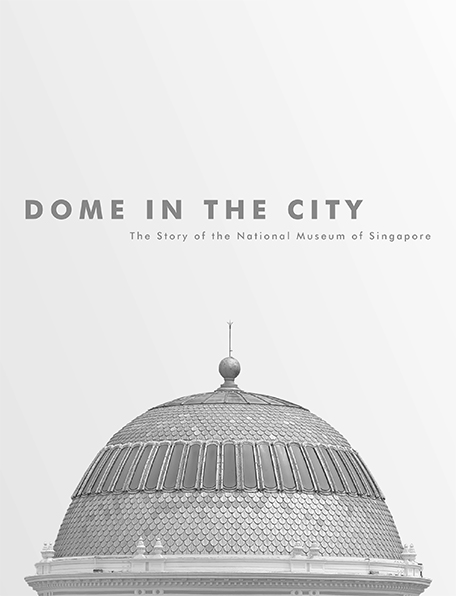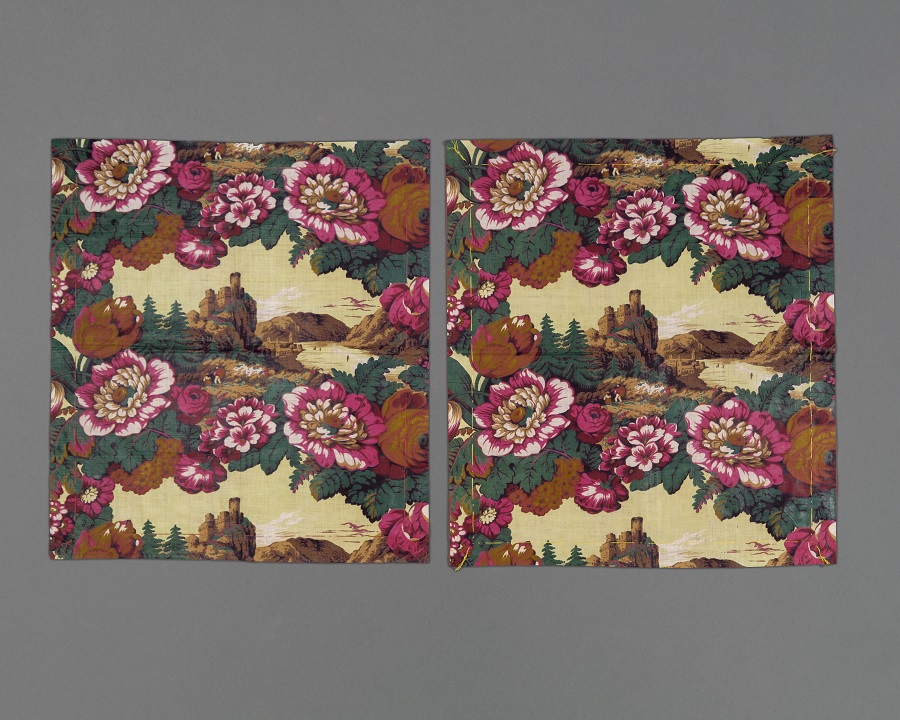Frame size: 74.6 x 64.5 cm
One of the most significant painters in Thailand of the mid-20th century, Fua Haribhitak (1910-1993) is among the first generation of Thai modern artists who studied under Silpa Bhirasri (Corrado Feroci), considered the initiator of modern art in Thailand. A restless artist, Haribhitak struggled against rigid learning and studied in multiple schools. He is known for experimenting in styles, notably impressionism and cubism, the latter which he seemed to particularly spearhead among Thai artists. This work is from the strongest and most well-known period of Haribhitak’s career, from when he was in Italy (1954 – 1956) studying at the Accademia di Bella Arti in Rome. While he had tried cubism in the early 1940s, it was in Italy when he really began to explore it. “Face” particularly shows a high degree of abstraction in Haribhitak’s oeuvre. Like in other paintings of this period, he takes off from the human form but here, he uses only facial features such as eyes, nose and lips, which he reduces to the outline of their shape. Notably, the shape of a face itself here is indistinguishable from the background, which is made of shattered planes of varying colours. Indeed, Haribhitak became bolder in his use of colour in this period. In this work, he shows a preference for violet, magenta and green, their varying hues being used to highlight the fragmented forms and their intersections with each other. Haribhitak received three gold medals in the National Exhibitions of Art in Thailand (1949, 1950, 1957) and was the first artist to receive the National Artist award in Thailand for visual arts in 1985.




